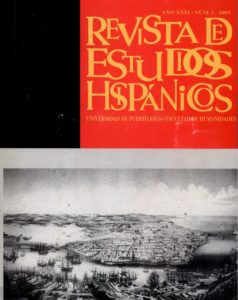Abstract
Upon his return to Havana, Alejo Carpentier undertakes the task of founding the literary city, which he will elaborate in all of his narrative work, starting from his seminal novel, Los pasos perdidos (1953), as well as in his essays, particularly in La ciudad de las columnas (1970). He accomplishes this task through a series of elements: (1) city of columns, which characterize Havana both as a unifying and diverse element; (2) vision from the outside; ( 3) search of a sacred center, not only of the city as artifact, but also of Havana as the geographical center of the Caribbean; (4) development of the themes associated with literary Modernity, and (5) the conjunction of music and architecture, which define time and space.This work is licensed under a Creative Commons Attribution-NonCommercial 4.0 International License.
Downloads
Download data is not yet available.

